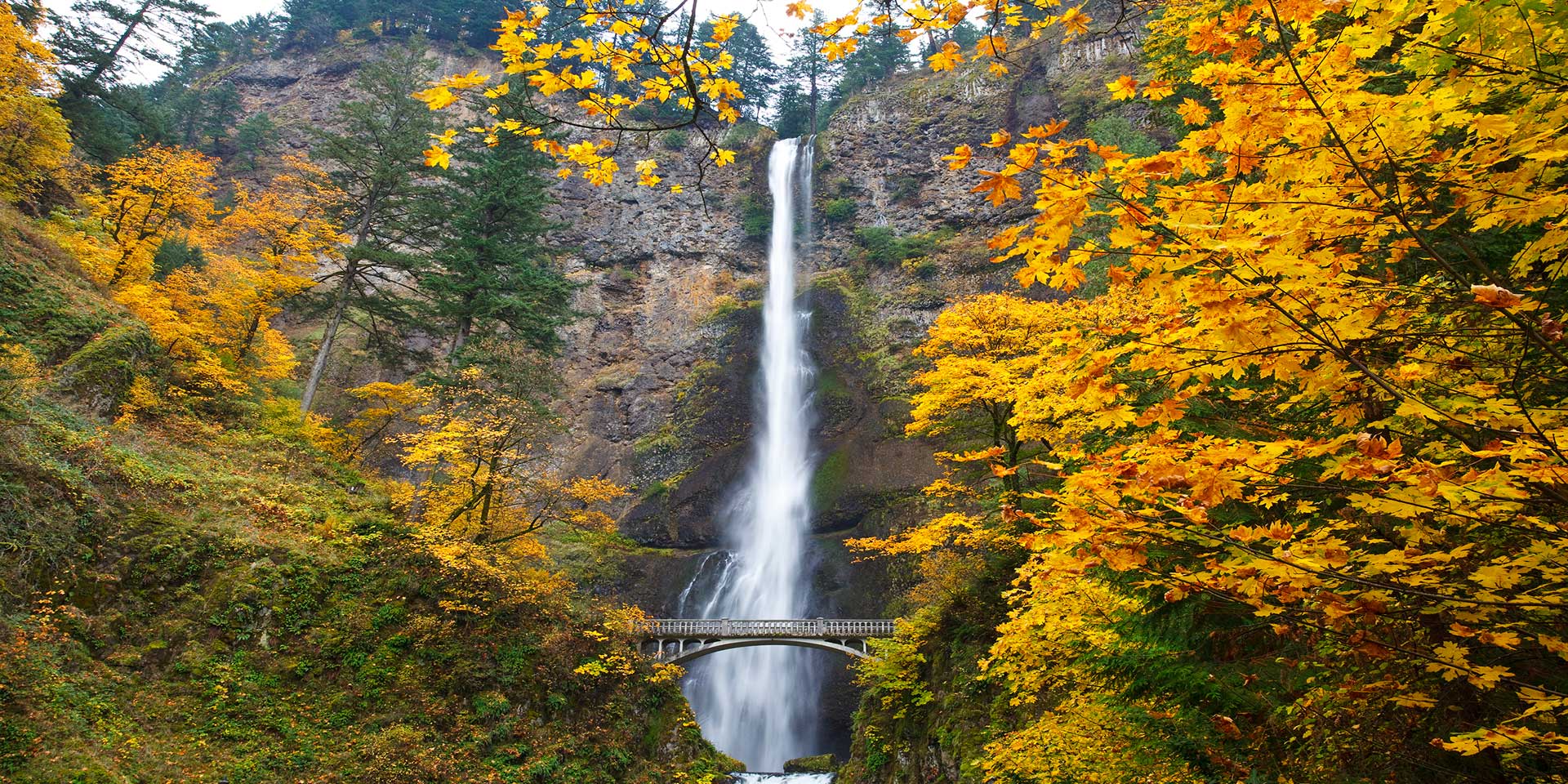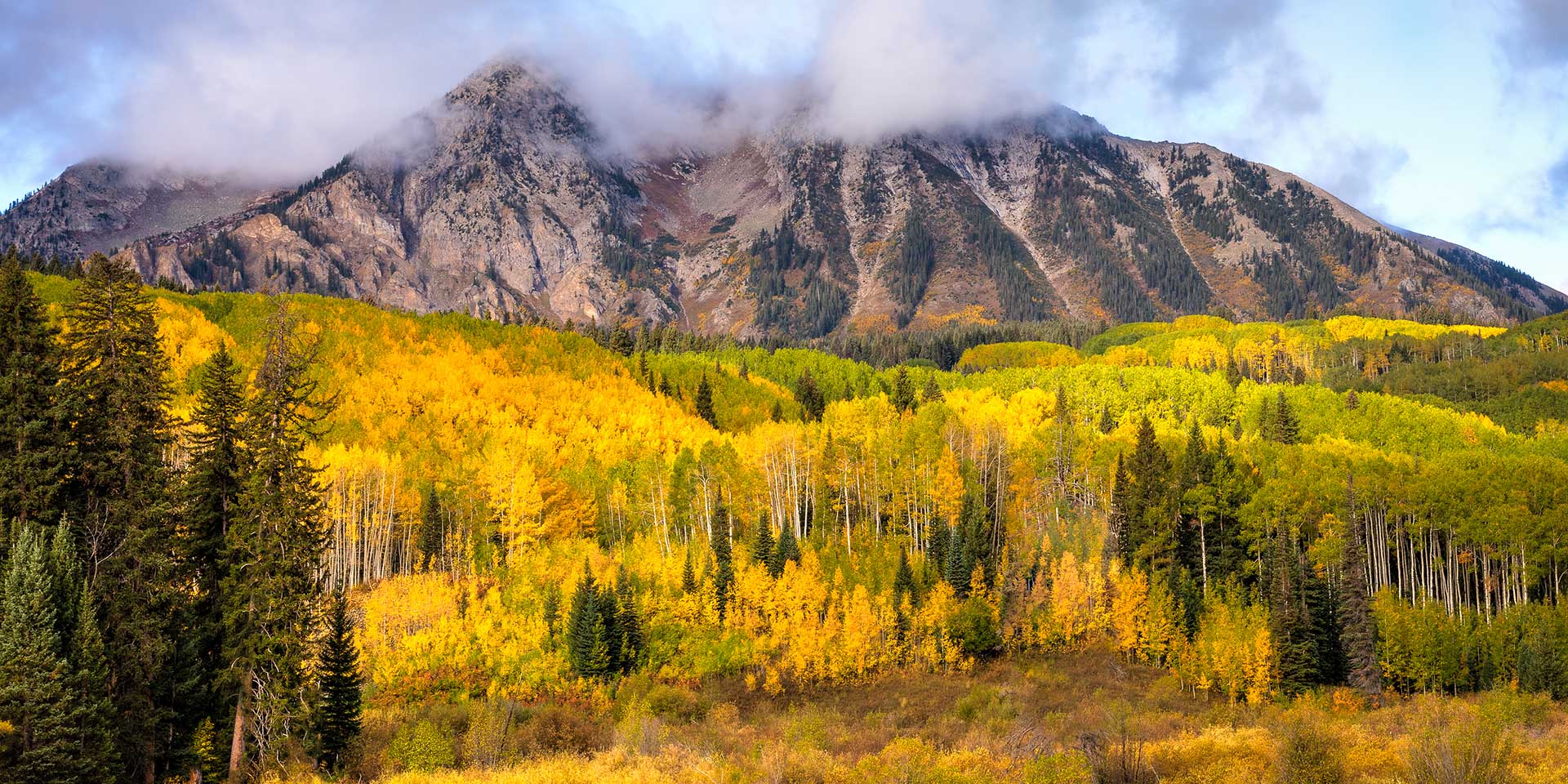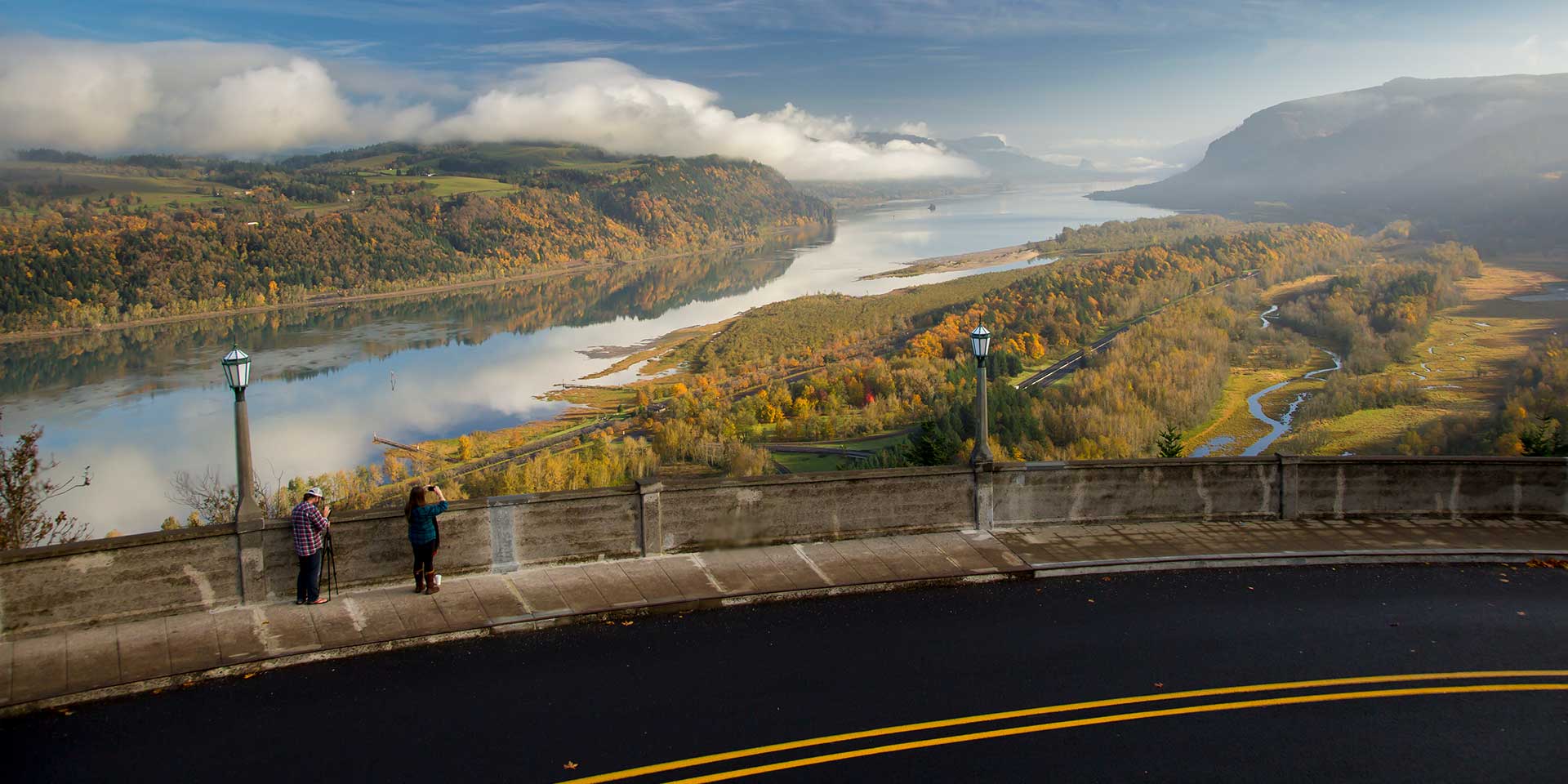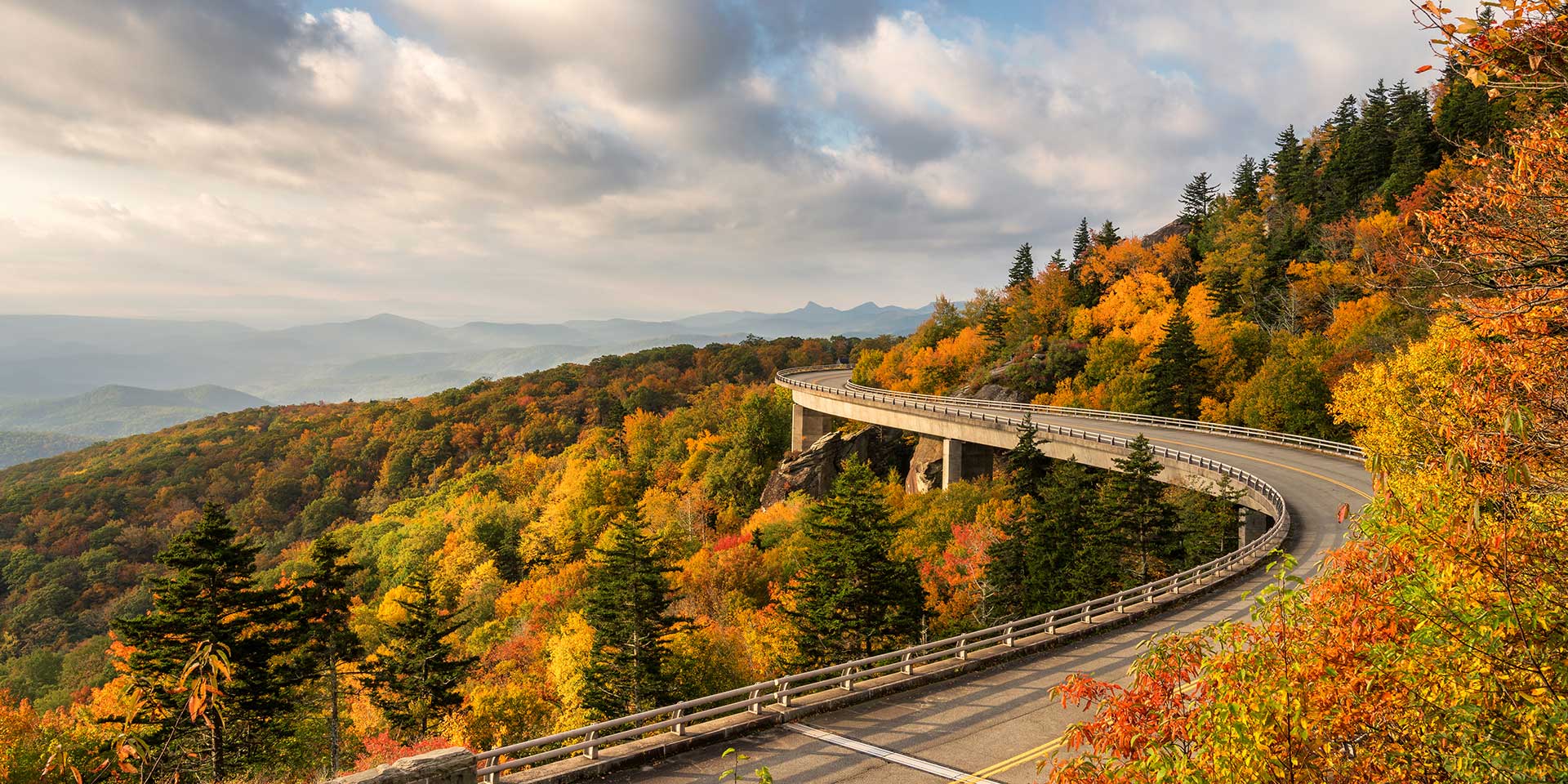“Leaf peeping” may be one of the most ridiculous-sounding terms in the tourism industry, but darn if it ain’t a good time.
When fall temperatures suddenly transform wide swaths of tree-drenched American landscape into natural oases of colorful brilliance each year, our first instinct (besides wanting to dive into a pile of leaves) is to get in our cars and survey the beauty.
So stick your head out the window and salivate like a puppy at the majestic fall foliage that dominates the roadways of five of America’s most beautiful scenic drives.
Skyline Drive & Blue Ridge Parkway, Virginia / North Carolina
Starting near Front Royal, Virginia, located about 70 miles west of Washington, D.C., the 105-mile Skyline Drive is the chief thoroughfare cutting through the spectacular 200,000-acre Shenandoah National Park, where 70 overlooks provide dramatic vistas of the color-packed Shenandoah Valley in the fall.
If you can take your eyes off the leaves, watch out for wildlife, including deer and turkeys (and maybe the occasional black bear), on the road as you make your way to the southern border of the park, where the extremely popular (especially in fall) 469-mile Blue Ridge Parkway (known as “America’s Favorite Drive”) begins about 25 miles west of the wonderfully scenic town of Charlottesville.
Once on the parkway, you can either picnic at the historic Mabry Mill, catch an outdoor concert at the Blue Ridge Music Center, grab a bite to eat at the seductively welcoming Pisgah Inn (located near the highest point along the parkway roughly 25 miles from Asheville), or take in windswept panoramas of the rugged fall foliage at Craggy Gardens.
The moderate, 20-minute walk to the top of the Craggy Pinnacle Trail is well worth the effort, as is renting a canoe on Prince Lake or snapping a photo of the brilliant foliage that lines the parkway near the Linn Cove Viaduct. With more than 100 species of trees along the Blue Ridge Parkway, you won’t have to work very hard to observe an endless assortment of jaw-dropping fall colors.

Green Mountain Scenic Byway, Vermont
Vermont is synonymous with fall foliage, and one of the most picturesque routes in the Green Mountain State is the short but breathtaking Green Mountain Scenic Byway. The route begins about 30 miles east of Burlington in the town of Waterbury, extending along Vermont Route 100 for 14.5 miles to conclude in the postcard-perfect mountain community of Stowe.
Along the way, you will encounter an eye-popping assortment of the fall foliage imagery conjured in your dreams, blanketed by state forest on both sides of the road. Views of Vermont’s largest peak, Mount Mansfield, dominate the landscape as the byway meanders along the peaceful Little River, providing gorgeous open vistas of colorful meadows, forests and farmland.
Explore the historic village centers of Waterbury and Stowe; watch out for animals, from rare birds to, possibly, the elusive mountain bobcat; and be sure to save time for stopovers at some of the charming little shops along the way, including Stowe Maple and Doreen’s Antiques.
You can also sip coffee at Vermont Artisan Coffee & Tea, and order sandwiches for picnicking at the cute Green Goddess Café — which you can take over to Waterbury Reservoir, where boating and fishing are also on the menu. And yes, there is a Ben & Jerry’s along the way. This is Vermont, remember?
Kebler Pass, Colorado
If your fall foliage excursion calls for losing yourself in nature with as few modern distractions as possible, Colorado’s remote Kebler Pass is (softly) calling your name.

While Colorado is blessed with a deep arsenal of spectacular scenic drives, from the Million Dollar Highway to the Pikes Peak Highway, none are as flat-out mesmerizing in fall as this lesser-known, 33-mile, mostly gravel mountain pass cutting through western Colorado’s Gunnison National Forest at an elevation of around 10,000 feet.
Start your excursion in the beautifully picturesque ski town of Crested Butte and head west along Gunnison County Road 12 until it links up with State Highway 133 near the equally breathtaking Paonia State Park.
Along the way, you will encounter a preconception-smashing assortment of glorious aspen and evergreen trees shimmering in the bright Colorado sunshine as you pass through one of the largest aspen groves in the U.S., set against the dramatic peaks of the West Elk Mountains towering above the landscape.
While almost all gravel (some sections near the top have been paved), the road is in very good condition and is passable for two-wheel-drive cars from around late May to early November, after which the road is closed for winter.
In addition to snapping photos and listening to the gentle sounds of the wind breezing through the aspens, you can also camp at a couple of lakes near the road (Lake Irwin and Lost Lake) or try your hand rock climbing the rugged Mount Emmons.
Historic Columbia River Highway, Oregon
One of America’s prettiest drives is also one of its first planned scenic roadways, meandering 75 miles from the outskirts of Portland along the spectacularly scenic Columbia River, which separates Oregon from Washington.
The Historic Columbia River Highway starts in Troutdale, about 20 miles east of downtown Portland, where the gray of city life quickly fades into a vibrant natural landscape cutting through Mount Hood National Forest en route to the highway’s eastern terminus in a town called The Dalles. Along the way, you will observe a number of waterfalls drenched in stunning fall color, including the famous 620-foot Multnomah Falls.

Grab a bite to eat at the historic Multnomah Falls Lodge and continue through the wild beauty of the Columbia River Gorge, stopping off for clifftop panoramas and hiking/biking trails, including the Historic Columbia River Highway State Trail.
Save time to explore the beautiful and quirky little town of Hood River, from which you have several options: You can either turn around and head back the same way to Portland, cross the Hood River Bridge to travel back to Portland on the Washington side of the river (stopping over at scenic spots like Beacon Rock State Park), or head south along the Mount Hood Scenic Byway to explore the majesty of Oregon’s iconic Mount Hood dressed in bright fall foliage. Whichever route you choose, have your camera ready.
M-22, Michigan
Michigan continues to fly under the radar as one of America’s most underrated states, with more than 3,000 miles of coastline and an all-star assortment of awesome fall foliage drives.
The king of them all is M-22, which, despite its understated name, passes through the stunning Sleeping Bear Dunes National Lakeshore — voted “The Most Beautiful Place in America” by “Good Morning America” in 2011.
While still something of a hidden gem, the quiet, 116-mile roadway hugs the coast of Lake Michigan in the northwestern corner of the state for a serene waterfront drive where the cars are few and the color-soaked forests are many.
Start your journey in the ridiculously charming tourist town of Traverse City (where you should definitely grab a meal at the Cook’s House) before heading west along the lakeshore to Sleeping Bear Dunes, which you can hike, explore by boat cruise, or marvel at its majestic fall foliage from above along the roadway.
The deep-blue waters and sandy beaches add a dramatic flair to the surrounding fall colors, which continue as you make your way south along Michigan’s western shore, passing through interesting small towns, wineries, farms and the famous Point Betsie Lighthouse.




